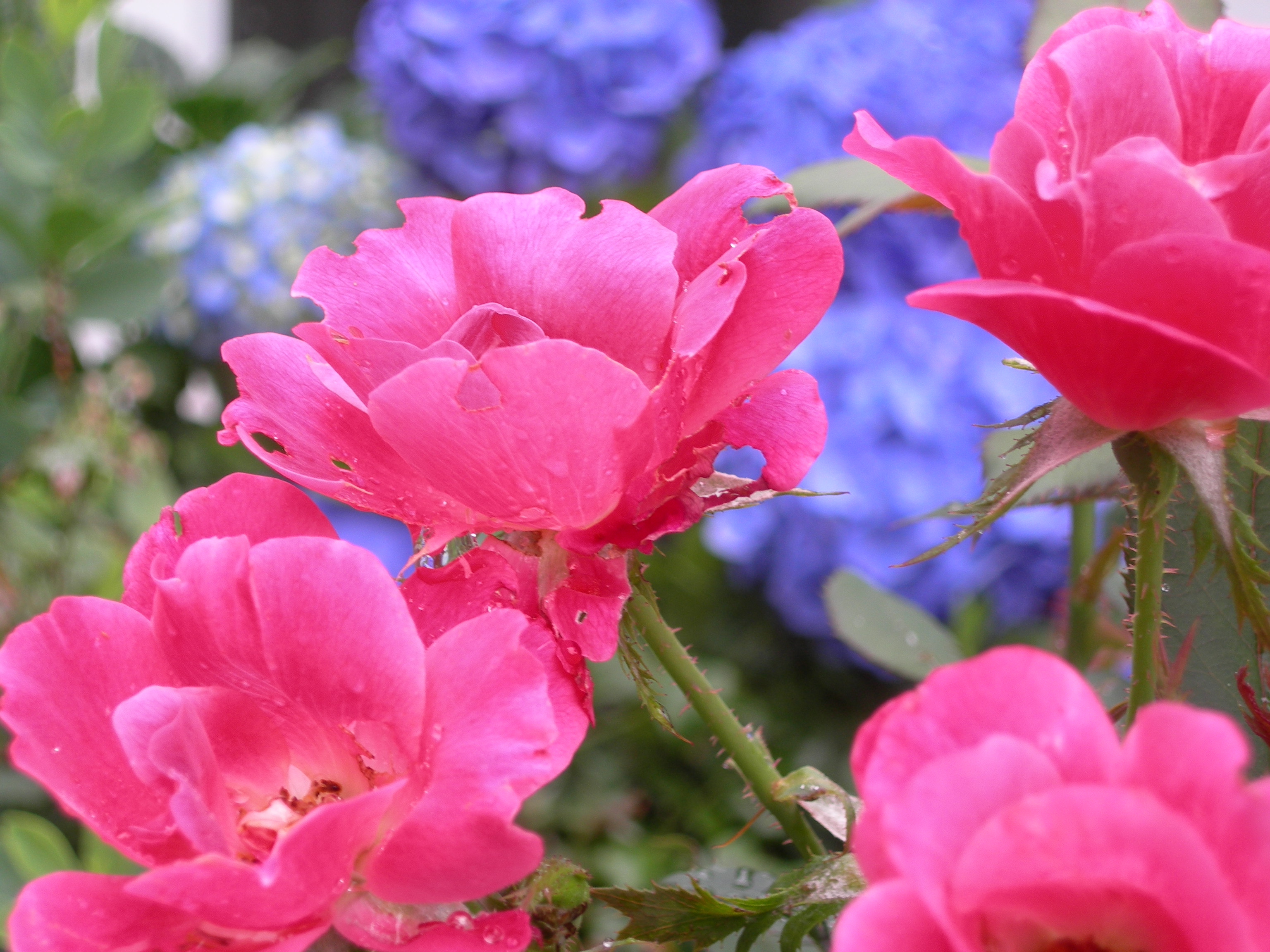
May Garden Tips
by Nancy Greeley, with contributions from Lila Griswold, Liz Keister and Suzanne Knutson
Last month you got a great start on clean up and studied your garden to identify which areas need extra attention including dividing perennials, moving plants or ideas for planting new ones. Or, maybe you have come up with total garden redesigns! Perhaps you even sketched your garden so that you can note what plants are planted in different areas. The fun really starts now as more and more things start to emerge. Now that things are starting to grow there is much to do in the garden:
Track How Your Garden Grows: Now is a great time to carefully note what’s popping up where and when in your garden. Start a garden journal: As things start to come alive and bloom in your garden, make sure to keep records. In addition to cataloging the names and locations of plants & shrubs, take note of when things start to bloom, what colors, heights and textures you see. Take photos of different areas in your garden as the season progresses. Monitor how different varieties are performing, track how plants that you divided and transplanted are doing in their new homes. This will be a fun project and will provide you with the details you need to enhance your garden now and plan a vision for the future.
Veggie Gardens: – It’s time clean out or finish planning your veggie garden.
- Prepare your vegetable garden for planting – weed edges (easier when soil is damp) add compost/ manure if needed, and rake.
- If you’ve started tomatoes, peppers, herb seeds, or other vegetables indoors, be sure to harden them off (gradually bringing them outside for several hours a day for several days) before adding them to your garden.
- Direct sow varieties like Beans, Pumpkins, Corn, Zucchini, Cucumbers, and Lettuce.
- Please refer to this article about vegetable gardens written by Pam Nobumoto and Laurie Musilli for guidance. The Victory Garden is enjoying a resurgence so join in the fun and serve you and your family fresh produce for the whole summer and reduce your trips to the grocery store.
Weed those beds: This is extremely important. The more you identify and remove weeds when they’re small, the easier your battle will be throughout the season. Weeds steal nutrients and water from your other plants to be sure to keep after it!
- Consider planting a pleasing ground cover that will crowd out weeds and keep the ground moisture in. Why not try a beautiful and fragrant creeping thyme! Ground covers can be beautiful, feed pollinators and reduce the amount of mulch you need to buy and spread.
- Consider sprinkling Preen Weed Preventer. It won’t kill weeds, but will prevent new weeds from sprouting. Apply before you mulch and water it in if we don’t get rain.
- Mulch: Once your plants start to emerge, add a natural mulch to the beds to help retain water and suppress weeds. Be careful not to smother emerging perennials in the process.
Edge your beds: Clearly define your beds and make it easier to mow and mulch. A clean edge makes a real difference, along with an inch and a half or two of good, fine- to medium-textured organic mulch. A real finishing touch!
Mowing: For your first lawn mowing of the season, if you haven’t done so already, leave the grass clippings on top of the lawn to help add nitrogen back to your soil.
Divide and transplant perennials: Wait for a cool day to divide perennials that have popped up in surprising places or have outgrown their space. Wait until the plants are off to a good start, but make sure to make the move before they start budding.
- Don’t divide peonies until the fall. Put up stakes/hoops for them before they get too tall.
- If you have extra plants you can share with your friends. Maybe they’ll share, too!
Feed/Fertilize: Fertilize your flowering perennials in early spring to help give them a boost. We recommend using an organic, all natural fertilizer. If you haven’t already fertilized your roses & clematis, now is the time by mixing the fertilizer into the top inch or two of soil.
Ward off Those Pesky Pests: Begin to deter those annoying critters that love your garden.
- Spray “Deer Off” or other critter repellent on susceptible perennials
- Guard against groundhogs (deep underground edge), deer (fencing)
Prune summer blooming shrubs: Prune butterfly bush, rose of sharon, caryopteris, etc., now but wait until after blooming to prune lilacs, forsythia, verbena, rhodies and the like.
What to do With Those Spent Daffodils & Tulips?: Wow those daffodils and tulips sure were beautiful but now it’s time to clean up. Deadhead spent spring bulbs like tulips and daffodils, but be sure to leave foliage intact until it has died back. Once the plants turn brown, you can cut them back to the ground. This is very important as the foliage dying back helps recharge the bulbs for next year’s growth. So don’t get too eager or you’ll be disappointed next spring. If you can, it’s a great idea to plant these behind early growing perennials that will block the dead leaves.
Can We?! Can We?! Can we Finally Plant Our Window Boxes, Annuals & Patio Containers?: Almost! In early May you can develop your design plans and purchase plants as they become available, but wait until mid May when the threat of frost is past to plant.
- Be sure to use a potting mix that helps retain water. If you don’t want to purchase potting soil, simply mix your garden soil with compost and peat moss.
- Get creative! Feel free to combine annuals, veggies, herbs, perennials and more to create your own custom design.
Dahlias, Gladiolus, Calla Lily Bulbs:
Planting tender bulbs/tubers such as these also needs to be delayed until after the last frost date. Mid- May is usually safe in our area. If you’ve started them indoors to get a jumpstart on growth, make sure to gradually bring them out for a few hours a day for several days to help get them acclimated before planting them in the ground.
Tick checks: Please be careful to protect yourself from ticks. This is an extremely important task that should be done routinely. Covering up with long sleeves and pants helps, but you need to make a habit of thoroughly checking your body for ticks each time you return indoors after spending time in your garden.
Enjoy the beautiful month of May in your garden and try to take it all in; the fragrant lilacs, elegant bleeding hearts, and classic bearded iris are just some of the treasures of the May garden that should be appreciated. Maybe you’ll join the “Victory Garden” revolution and start a vegetable garden. Whatever you focus on, I hope your garden brings you peace, joy, strength and a deep sense of satisfaction. Please remember, the more work you do to pull weeds, mulch, and give your plants a healthy start to the season, the less work you’ll have to do in the hot June or July garden.
As you immerse yourself in the beauty of your May garden, consider how a professional landscape designer can enhance this experience even further. With expertise in creating harmonious outdoor spaces, Sugar Green Gardens specializes in high-end landscape designs that go beyond mere visual appeal. Their thoughtful approach ensures that each garden is tailored to your specific needs, creating an oasis that fosters tranquility and enjoyment throughout the seasons.
By incorporating elements such as lush plantings, elegant pathways, and inviting gathering areas, they not only elevate your garden’s aesthetic but also transform it into a functional space for relaxation and connection with nature.
Investing in a well-designed landscape is not just about enhancing the beauty of your property; it’s also a savvy financial decision. Sugar Green Gardens’ designs are crafted with a keen understanding of the real estate market, ensuring that your investment yields a significant return. Thoughtful planning and high-quality materials result in landscapes that are not only stunning but also enduring, providing lasting enjoyment and increasing your property’s value.
Many thanks to Lila Griswold, Liz Keister and Suzanne Knutson for their contributions to this list of to dos. Happy Gardening!


